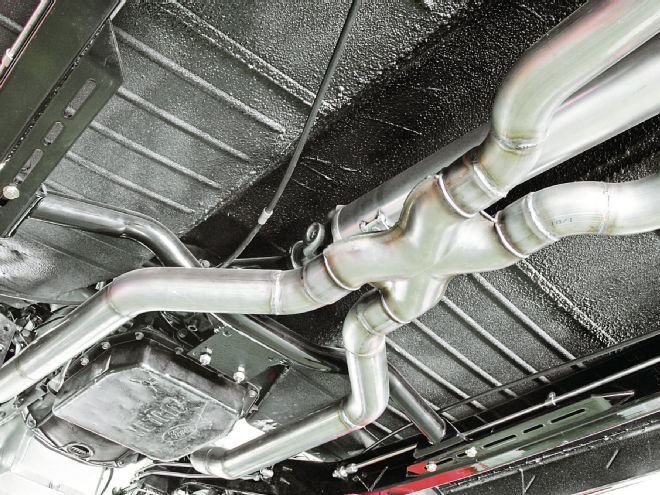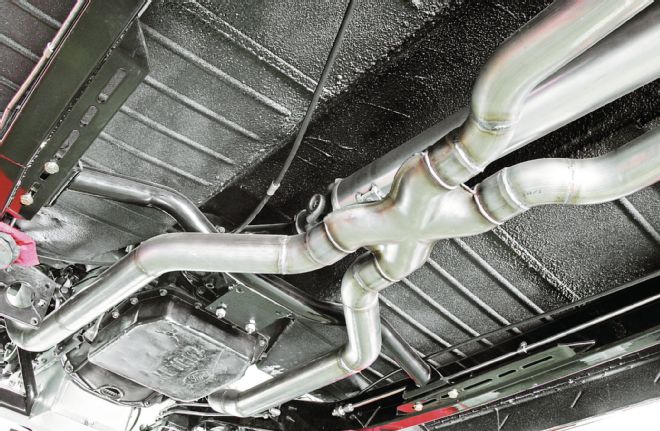
 Installing a crossover H-pipe or (as on this custom mandrel-bent 2.5-inch exhaust system) an X-pipe helps equalize the pressure in both exhaust pipes, aiding scavenging for increased performance, especially in the midrange.
Installing a crossover H-pipe or (as on this custom mandrel-bent 2.5-inch exhaust system) an X-pipe helps equalize the pressure in both exhaust pipes, aiding scavenging for increased performance, especially in the midrange.
Proper exhaust-pipe size is a function of both engine output and displacement. The higher the engine’s output, the larger the pipes should be. Likewise, larger engine displacements call for bigger pipes. But you don’t want to become a victim of “More’s Law,” either: While up to a point reducing exhaust restriction generally helps both power and gas mileage, going too large can over-scavenge an engine and actually decrease engine output as well as fuel efficiency. The accompanying exhaust system size guidelines are compiled from Flowmaster Mufflers and RoadkillCustoms.com data. To avoid becoming a restriction, all muffler and catalytic converter inlet and outlet sizes should correspond to the exhaust pipe sizes, and design your exhaust system to use the minimum number of bends.